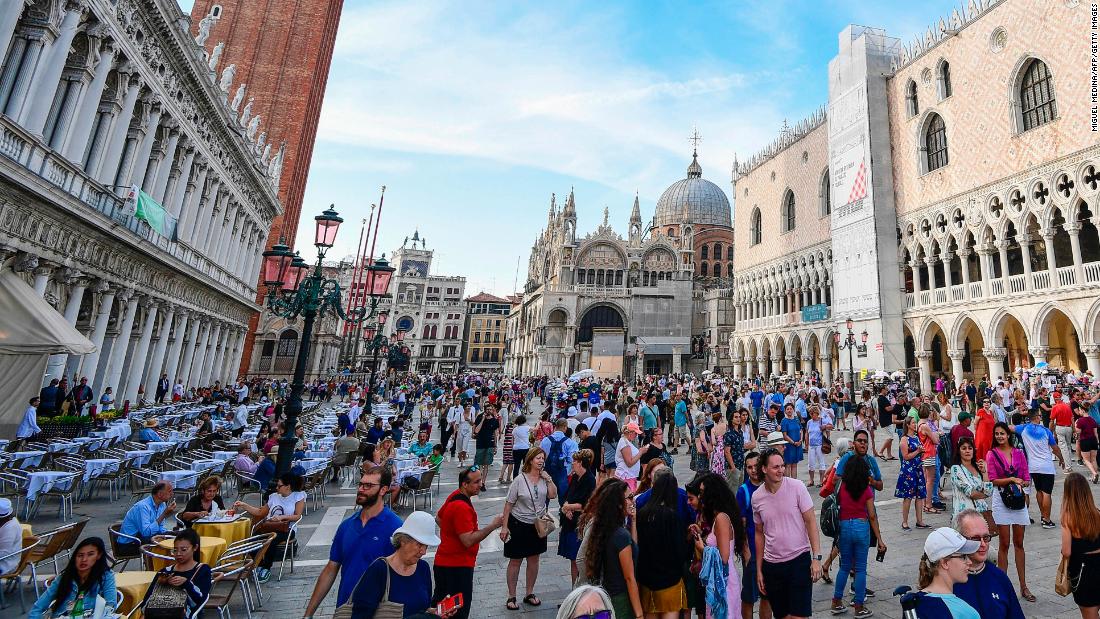(CNN) — The countdown has begun. From January 16, 2023, visitors to Venice — that jewel in Italy’s tourism crown — will have to pay for the privilege.
It’s set to become the first city in the world to require an entrance fee. The launch date was announced by Venice’s councilor for tourism, Simone Venturini, at a press conference on Friday.
Venturini called the new measure a “great revolution,” and a solution for the overtourism problem that the lagoon city has been struggling with for decades.
The cost of the ticket will range from a three-euro minimum right up to 10 euros. The price will not be fixed, but will vary according to the number of visitors: The more requests for entry, the higher the cost.
The goal, explained Venturini, is not to “close the city,” but to get people to book their presence to reduce the “tourist peaks.” He said, “Venice is a living city and it has to stay that way.”
Exceptions
The complex ticket booking system and its online platform will be unveiled this fall. There are many exceptions to the entrance ticket mandate, explained Michele Zuin, councilor for the budget.
Residents and children aged under six will be exempt, as will disabled people, homeowners, those who come to the city for health reasons or to visit relatives, and those coming to attend a sporting or cultural event.
Overnight hotel guests will also avoid paying the entrance fee because they’ll already be paying a tourist tax through their hotel.
“It is not a system to make cash but to manage tourist flows,” Zuin emphasized. The proceeds from the entrance fee will go to lowering the taxes of Venetians, which are already very high due to the large volume of tourists that need to be accommodated.
The entrance fee will apply to the Venice historic center and the following islands:
Lido di Venezia, Pellestrina, Murano, Burano, Torcello, Sant’Erasmo, Mazzorbo, Mazzorbetto, Vignole, S. Andrea, La Certosa, S. Servolo, S. Clemente and Poveglia.
The fines for ticket violations will range from 50 euros up to 300 euros.
Post-pandemic mentality
“Covid made us realize that what was an everyday occurrence before Covid isn’t acceptable anymore — the mentality has changed, as has the sensitivity [towards crowds],” he said.
He explained that the booking system would “give us the chance to know how many people are predicted for that day, and to calibrate services according to the number.”
Venturini also said in April that the portal would flag people that they might want to change their mind.
“We can say, ‘Dear visitor, we don’t advise coming on this date because it’s Ferragosto [August public holiday] or Easter — there’ll be a lot of people so it will hinder you from having a peaceful visit, and if you make it a week later you can enjoy your visit more,” he said.
Venturini also predicted that Venice won’t be the last to introduce a charge.
“I think many other European cites who live with significant numbers of daytrippers are watching us to understand in what way they can introduce [a similar scheme],” he said.
The fee intrigued visitors to such an extent that visitors grew from 40,000 in 2009 to 1 million in 2018.
Main image: Pre-pandemic crowds in Venice’s St. Mark’s Square. (MIGUEL MEDINA/AFP/Getty Images)
